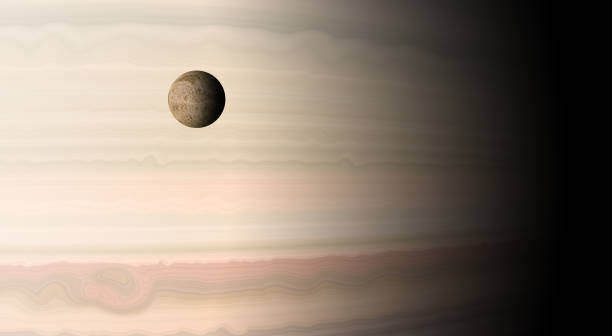Europa, one of Jupiter‘s four largest moons, also known as Galilean moons, has long captivated the attention of scientists and space enthusiasts alike. Discovered by Galileo Galilei in 1610, this icy moon has become a prime target in the search for extraterrestrial life within our solar system due to its potential subsurface ocean. This article will delve into Europa’s unique characteristics, its potential to harbor life, and the ongoing missions and research aimed at unlocking its secrets.
Europa’s Unique Characteristics
Europa is the sixth-largest moon in our solar system, with a diameter of approximately 3,100 kilometers (1,900 miles), making it slightly smaller than Earth’s Moon. Europa’s surface is composed primarily of water ice, giving it a distinct appearance marked by a complex network of cracks and ridges. These surface features suggest that the moon has undergone significant geological activity in the past.
Beneath Europa’s icy shell, scientists believe there is a subsurface ocean containing more than twice the amount of water found on Earth. This ocean is kept in a liquid state due to the gravitational interaction between Europa and Jupiter, which generates heat through a process known as tidal heating. Additionally, Europa’s relatively young and smooth surface indicates that it is continually resurfaced, possibly by the upwelling of water from the subsurface ocean.
Potential for Life on Europa
The presence of a subsurface ocean on Europa has led scientists to consider the moon as a promising location in the search for extraterrestrial life. Life as we know it requires three essential ingredients: liquid water, an energy source, and the necessary chemical elements to form organic compounds. Europa appears to possess all three of these ingredients, making it an intriguing target for astrobiological research.
Europa’s subsurface ocean provides the liquid water necessary for life, while the tidal heating generated by the moon’s interaction with Jupiter could supply the required energy source. Furthermore, the discovery of clay-like minerals and potential plumes of water vapor erupting from Europa’s surface has raised the possibility that the moon contains the necessary chemical building blocks for life.
Ongoing Missions and Research
Given Europa’s potential for habitability, several missions have been planned to further explore the moon and its potential for life. Past missions, such as the Galileo spacecraft and the Hubble Space Telescope, have provided valuable data on Europa’s surface and its potential water plumes. Future missions, including NASA’s Europa Clipper and the European Space Agency’s JUpiter ICy moons Explorer (JUICE), are set to launch in the coming years.
The Europa Clipper mission, scheduled for launch in the early 2020s, aims to conduct detailed reconnaissance of Europa’s ice shell and subsurface ocean. The spacecraft will carry a suite of scientific instruments designed to study the moon’s surface composition, ice shell thickness, and the depth and salinity of its subsurface ocean. The JUICE mission, set to launch in 2022, will explore Jupiter’s icy moons, with a particular focus on Europa, Ganymede, and Callisto, and aims to investigate their potential habitability.
Compelling Destination
Europa stands as one of the most compelling destinations in our solar system for the search for extraterrestrial life. With its subsurface ocean, potential energy sources, and the necessary chemical elements for life, this icy moon beckons us to explore its mysteries and deepen our understanding of the cosmos. As ongoing and future missions continue to unveil the secrets of Europa, we are not only expanding our knowledge of our solar system but also taking significant steps toward answering the fundamental question: Are we alone in the universe?










